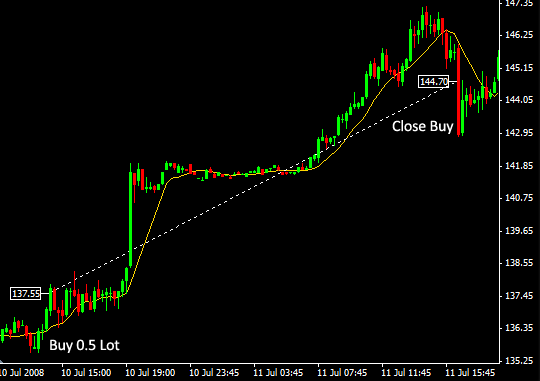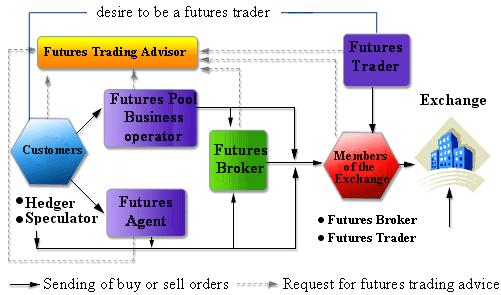A-Onesys Trend Trading
WITH A-ONESYS TREND TRADING METHOD YOU CAN FULFILL YOUR DREAMS

- Pay off your Mortgage
- Pay off your Debts
- Pay your Bills
- Buy a Dream HOME/Car
- Pay for your Kids' Education
- Save for your Retirement
- Go for Vocation
- For Better Life Style
- Be your own BOSS
- Never be laid OFF
- Pass on to your Generations

Contact us
In finance, a futures contract is a standardized contract between two parties to exchange a specified asset of standardized quantity and quality for a price agreed today (the futures price or the strike price) with delivery occurring at a specified future date, the delivery date. The contracts are traded on a futures exchange. The party agreeing to buy the underlying asset in the future, the "buyer" of the contract, is said to be "long", and the party agreeing to sell the asset in the future, the "seller" of the contract, is said to be "short". The terminology reflects the expectations of the parties -- the buyer hopes or expects that the asset price is going to increase, while the seller hopes or expects that it will decrease. Note that the contract itself costs nothing to enter; the buy/sell terminology is a linguistic convenience reflecting the position each party is taking (long or short).
In many cases, the underlying asset to a futures contract may not be traditional commodities at all – that is, for financial futures the underlying asset or item can be currencies, securities or financial instruments and intangible assets or referenced items such as stock indexes and interest rates.
While the futures contract specifies a trade taking place in the future, the purpose of the futures exchange institution is to act as intermediary and minimize the risk of default by either party. Thus the exchange requires both parties to put up an initial amount of cash, the margin. Additionally, since the futures price will generally change daily, the difference in the prior agreed-upon price and the daily futures price is settled daily also. The exchange will draw money out of one party's margin account and put it into the other's so that each party has the appropriate daily loss or profit. If the margin account goes below a certain value, then a margin call is made and the account owner must replenish the margin account. This process is known as marking to market. Thus on the delivery date, the amount exchanged is not the specified price on the contract but the spot value (since any gain or loss has already been previously settled by marking to market).
A closely related contract is a forward contract. A forward is like a futures in that it specifies the exchange of goods for a specified price at a specified future date. However, a forward is not traded on an exchange and thus does not have the interim partial payments due to marking to market. Nor is the contract standardized, as on the exchange.
Unlike an option, both parties of a futures contract must fulfill the contract on the delivery date. The seller delivers the underlying asset to the buyer, or, if it is a cash-settled futures contract, then cash is transferred from the futures trader who sustained a loss to the one who made a profit. To exit the commitment prior to the settlement date, the holder of a futures position can close out its contract obligations by taking the opposite position on another futures contract on the same asset and settlement date. The difference in futures prices is then a profit or loss.
In many cases, the underlying asset to a futures contract may not be traditional commodities at all – that is, for financial futures the underlying asset or item can be currencies, securities or financial instruments and intangible assets or referenced items such as stock indexes and interest rates.
While the futures contract specifies a trade taking place in the future, the purpose of the futures exchange institution is to act as intermediary and minimize the risk of default by either party. Thus the exchange requires both parties to put up an initial amount of cash, the margin. Additionally, since the futures price will generally change daily, the difference in the prior agreed-upon price and the daily futures price is settled daily also. The exchange will draw money out of one party's margin account and put it into the other's so that each party has the appropriate daily loss or profit. If the margin account goes below a certain value, then a margin call is made and the account owner must replenish the margin account. This process is known as marking to market. Thus on the delivery date, the amount exchanged is not the specified price on the contract but the spot value (since any gain or loss has already been previously settled by marking to market).
A closely related contract is a forward contract. A forward is like a futures in that it specifies the exchange of goods for a specified price at a specified future date. However, a forward is not traded on an exchange and thus does not have the interim partial payments due to marking to market. Nor is the contract standardized, as on the exchange.
Unlike an option, both parties of a futures contract must fulfill the contract on the delivery date. The seller delivers the underlying asset to the buyer, or, if it is a cash-settled futures contract, then cash is transferred from the futures trader who sustained a loss to the one who made a profit. To exit the commitment prior to the settlement date, the holder of a futures position can close out its contract obligations by taking the opposite position on another futures contract on the same asset and settlement date. The difference in futures prices is then a profit or loss.
Futures Contract......


A-Onesys Trend Trading
Email us @ crudeoiltrader1@gmail.com
Email us @ crudeoiltrader1@gmail.com

Risk Disclaimer:
Futures & Options trading has large potential rewards, but also large potential risk. You must be aware of the risks and be willing to accept them in order to invest in the futures and options markets. Don't trade with money you can't afford to lose. This is neither a solicitation nor an offer to Buy/Sell futures or options. No representation is being made that any account will or is likely to achieve profits or losses similar to those will be discussed in the course. The past performance of any A-Onesys Trend Trading or methodology is not necessarily indicative of future results. Past performance does not guarantee future results. We do not promote investment vehicles of any kind in this course. The A-Onesys Trend Trading Methods generate system signals and shall not to be construed as investment advice.Ultimately, the end user must confirm each signal generated and take full responsibility for his or her own actions.
Day trading Involves High Risks and You Can Lose A Lot of Money
Hypothetical or simulated performance results have certain inherent limitations. Unlike an actual performance record, simulated results do not represent actual trading. Also, since the trades have not actually been executed, the results may have under- or over-compensated for the impact, if any, certain market factors, such as lack of liquidity. Simulated A-Onesys Tren Trading programs in general are also subject to the fact that they are designed with the benefit of hindsight. No representation is being made that any account will or is likely to achieve profits or losses similar to those shown. Futures, Options and Forex (off-exchange foreign currency futures and options, or "FX") trading involves substantial risk of loss and is not suitable for every investor. The valuation of futures, options and forex may fluctuate, and, as a result, may cause you to lose more than your original investment. In no event should the content of this correspondence be construed as an express or implied promise, guarantee or implication by or from A-Onesys Trend Trading and/or its subsidiaries and affiliates that you will profit or that losses can or will be limited in any manner whatsoever.
----------------------------------------------------------------------------------------------------------------------------------------------------------------------------------------------------------------------------------------------
Futures & Options trading has large potential rewards, but also large potential risk. You must be aware of the risks and be willing to accept them in order to invest in the futures and options markets. Don't trade with money you can't afford to lose. This is neither a solicitation nor an offer to Buy/Sell futures or options. No representation is being made that any account will or is likely to achieve profits or losses similar to those will be discussed in the course. The past performance of any A-Onesys Trend Trading or methodology is not necessarily indicative of future results. Past performance does not guarantee future results. We do not promote investment vehicles of any kind in this course. The A-Onesys Trend Trading Methods generate system signals and shall not to be construed as investment advice.Ultimately, the end user must confirm each signal generated and take full responsibility for his or her own actions.
Day trading Involves High Risks and You Can Lose A Lot of Money
Hypothetical or simulated performance results have certain inherent limitations. Unlike an actual performance record, simulated results do not represent actual trading. Also, since the trades have not actually been executed, the results may have under- or over-compensated for the impact, if any, certain market factors, such as lack of liquidity. Simulated A-Onesys Tren Trading programs in general are also subject to the fact that they are designed with the benefit of hindsight. No representation is being made that any account will or is likely to achieve profits or losses similar to those shown. Futures, Options and Forex (off-exchange foreign currency futures and options, or "FX") trading involves substantial risk of loss and is not suitable for every investor. The valuation of futures, options and forex may fluctuate, and, as a result, may cause you to lose more than your original investment. In no event should the content of this correspondence be construed as an express or implied promise, guarantee or implication by or from A-Onesys Trend Trading and/or its subsidiaries and affiliates that you will profit or that losses can or will be limited in any manner whatsoever.
----------------------------------------------------------------------------------------------------------------------------------------------------------------------------------------------------------------------------------------------
